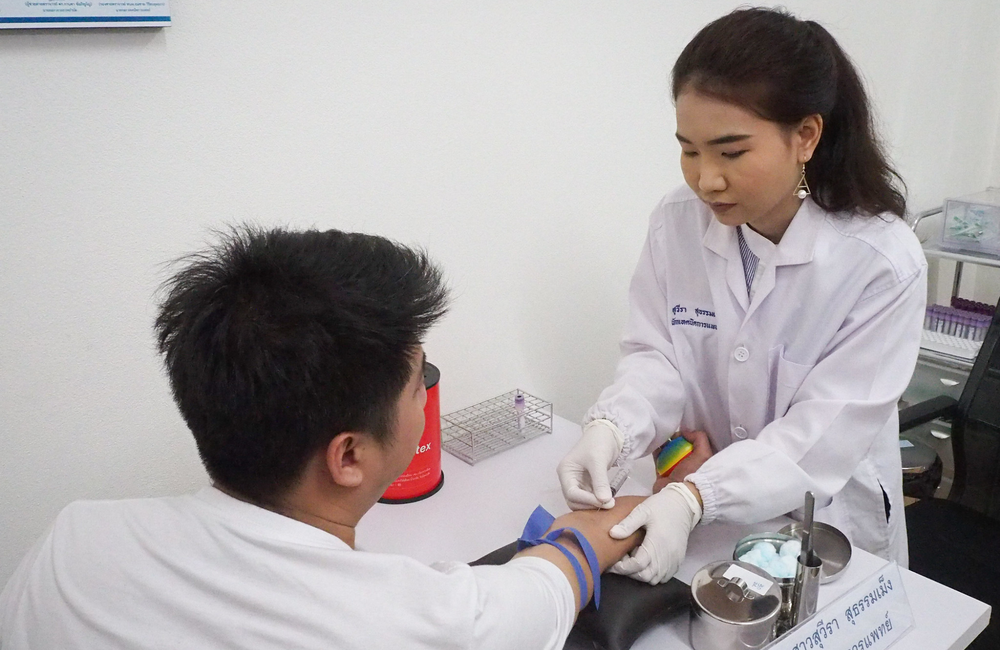
An assessment by the US President's Emergency Plan for AIDS Relief (PEPFAR) to determine the impact of COVID-19 mitigation strategies in 41 PEPFAR supported countries reported overall gains of 5% in the number of people on HIV treatment and a 2% increase in the number with viral load suppression in the first year of COVID-19 pandemic, despite challenges in delivery of services for HIV prevention and treatment the world over. There was less progress on HIV testing with an overall 19% decline in new HIV-positive diagnoses.
Some countries did much better than others. Countries reporting the highest progress in prevention, treatment and viral load suppression credited their successes to reducing facility attendance through prioritising index testing, increasing community-based and home-based HIV testing, boosting access to antiretrovirals in community settings, and improvements in data use through intensifying monitoring activities, systems, and data quality checks.
PEPFAR supports HIV national programmes in low and middle-income countries by funding interventions that offer HIV prevention, testing and treatment services for people living with, at risk of and affected by HIV. PEPFAR programmes focus on getting people living with HIV on treatment and supporting them to remain in care.
The study using the CDC Monitoring, Evaluation and Reporting (MER) data assessed change in programme performance before (January to March 2020) and after PEPFAR began implementing COVID-19 mitigation efforts (October to December 2020). For countries that reported high progress in their national HIV programmes, qualitative data was reviewed to determine specific strategies that contributed to their success.
Data analysis was limited to sites within each country that reported indicator data during both periods and the number of sites included ranged from three to 1,520 per country, depending on how big or small the national PEPFAR ART programme was. The analysis reviewed all the 41 countries to assess total and country level percentage change for HIV-positive test results, the number of people living with HIV who were receiving antiretroviral therapy (ART), and the rates of HIV viral load suppression. The authors note at least five limitations in the findings including limitations in data collection, data quality, being unable to monitor and track persons across time, the diverse contexts that countries had regarding the progress in their national HIV programmes before and after COVID-19 pandemic, as well as countries’ varied implementation of mitigation measures.
Nicaragua is the only country that reported high progress across all three indicators, while 23 countries (56%) reported great progress for at least one indicator. This included eight countries in west Africa, three in east Africa, two in southern Africa, five in central America, four in Asia, and one in the Caribbean.
Countries that showed high progress in their HIV testing services recorded a median increase of 43% in the number of HIV-positive test results (range = 25%–430%). Progress was attributed to prioritising testing services for the biological children and partners of people living with HIV (index testing) and increasing community-based and home-based HIV testing.
Countries that reported progress on HIV treatment service delivery recorded a 23% increase in the number of people living with HIV receiving ART (range = 11%–965%). These achievements were attributed to inventive changes in treatment service delivery programmes that reduced the frequency of attendance at health facilities, strengthened community and home ART delivery services, and provided between three and six months of antiretroviral treatment, a strategy known to be successful in providing ART to people living with HIV. Patient tracking and tracing activities through community, peer, and phone-based approaches were intensified to ensure retention in services. PEPFAR also intensified site visits for technical support and monitoring.
At the start of the COVID-19 pandemic, viral load testing coverage dropped across PEPFAR-supported countries. However, additional resources provided to countries to alleviate the impact of COVID-19 enabled them to better manage laboratory services to meet both SARS-CoV-2 and HIV testing needs and reduce disruption in HIV treatment services. This resulted in increased HIV viral load testing to record a 6% (range = 5%–62%) increase in HIV viral load suppression rates among people receiving HIV treatment. Strengthened focus on tracking and tracing people with high viral load, addressing stockout and testing backlog challenges, and arranging for patients to have viral load tests when they pick up their medication were some of the interventions reported by countries that did well.
These lessons from PEPFAR-supported countries are important for informing future public health practice, particularly during global health crises.
Fisher KA et al. Lessons Learned from Programmatic Gains in HIV Service Delivery During the COVID-19 Pandemic - 41 PEPFAR-Supported Countries, 2020. Morbidity and Mortality Weekly Report 71:447–452, 2022 (open access).
DOI: http://dx.doi.org/10.15585/mmwr.mm7112a2
Full image credit: Mplus extends HIV services with public financing to Chiang Rai. Wiraporn Srisuwanwattana, USAID. Available at www.flickr.com/photos/usaidasia/27234729458/ under a Creative Commons licence CC BY-NC 2.0.
